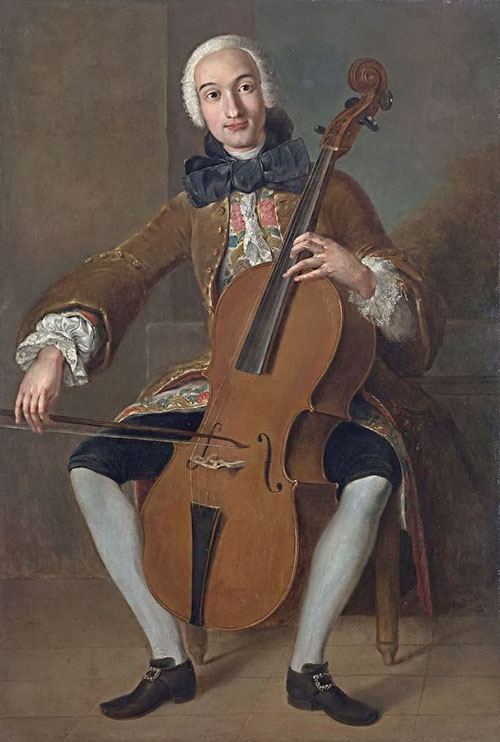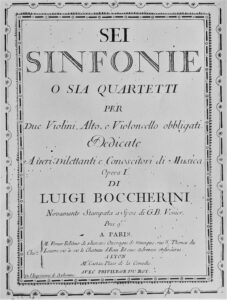It was difficult to keep a tab on Boccherini. At closing time he would already have travelled to another country, avidly seeking his next musical employment.
Born in Lucca, Italy, in 1743, he started playing the cello aged five, initially taught by his father. He was sent to study in Rome when he was thirteen. Father and son travelled to Vienna in 1757 to play in the Burgtheater orchestra. He subsequently moved to Spain, in the employment of royalty, where his career really took off.
Fashion has certainly changed since Boccherini’s time. What a fantastic outfit he is wearing! This painting records very accurately, too, the bow and cello of the period and the method of playing it – the bow hold, left hand position and the way the cello is supported by the legs rather than with the aid of a spike in the base of the cello resting on the floor, as is the way with modern cello playing.
Op 2 No 1, in our current concert series, is believed to be Boccherini’s first published quartet (1761), and as such it is probably one of the first string quartets ever written, contemporaneous with Haydn’s first quartet works.
This title page is a veritable treasure trove of information. The meaning of symphonie/symphony has changed since Boccherini’s time. He used it in the sense of people playing together rather than the subsequent transition of the meaning to imply something more large scale and orchestral. Then he says ‘O sia quartetti’. This suggests a massive shift into new territory – where the four instruments together were the new symphony – the new togetherness, which he invited people to enter into, with his dedication ‘to true amateurs and connoisseurs of music’. This was music for everybody to enjoy, in their homes, in a way that was conversational and intimate. There was one caveat not mentioned, though. You had to have a very good cellist in your quartet…
Boccherini was the cello virtuoso of his age and even in the earlier works the cello is given way more to do than was considered proper up to that time. It could be described as an emancipation. As a result cellists both love and dread his music. However, whatever feats of musical gymnastics the cellist is required to do, somehow this music generally maintains an air of gracefulness and tender expression – so characteristic of Boccherini.


Recent Comments